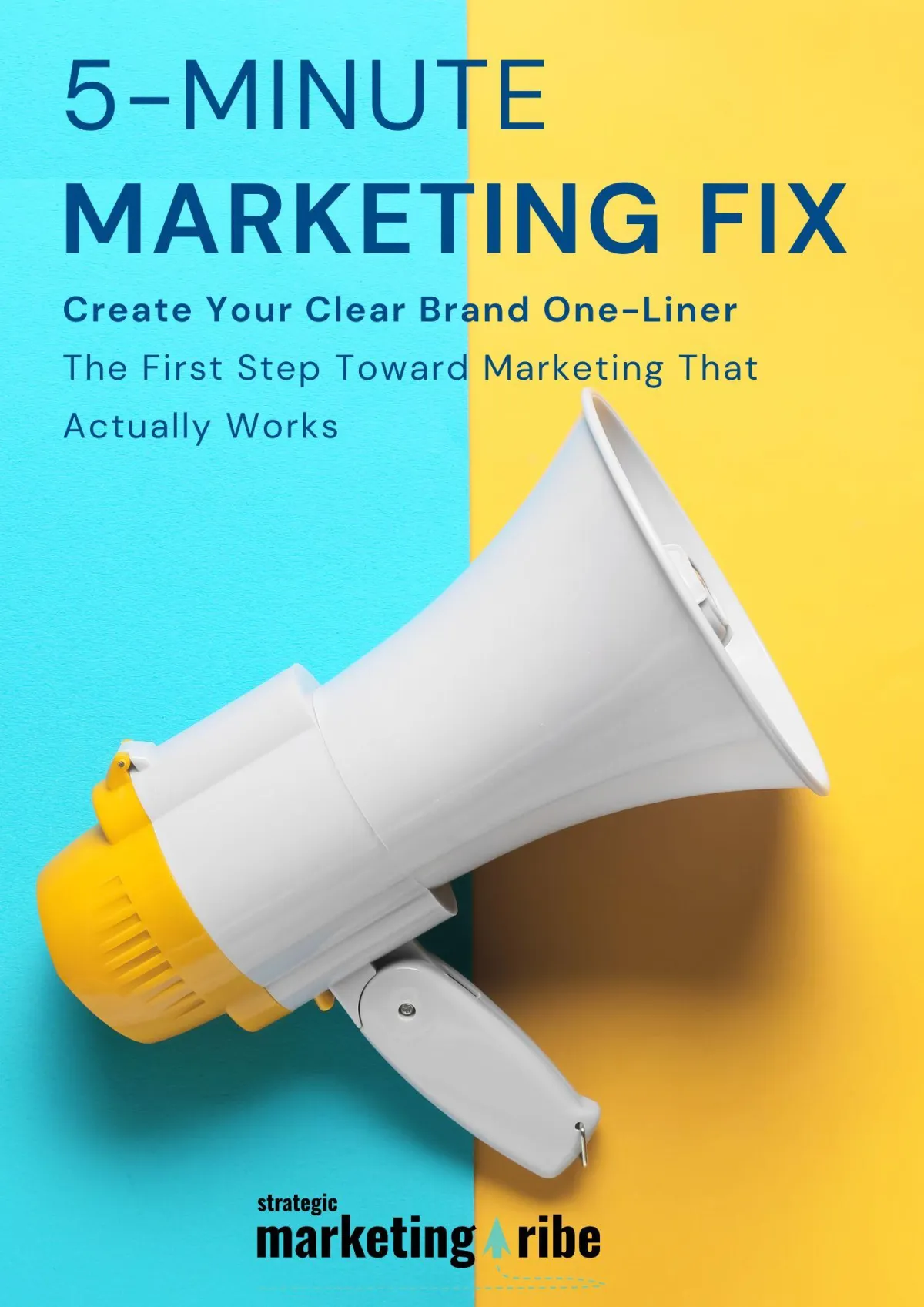STORY, MEET STRATEGY
Let’s make marketing feel less robotic and more real.
Find resources that bring your message—and your business—to life.

SA Small Businesses Face Closure—5 Moves to Stay Afloat
By Vicky Sidler | Published 20 August 2025 at 12:00 GMT
It’s not exactly the uplifting headline you wanted with your morning coffee: more than half of South Africa’s small businesses may not survive the next year without serious help.
The inaugural Small Business Growth Index (SBGI) reveals over 50% of small firms are contracting, struggling to trade, or at risk of shutting down. Only one in four reported any growth.
So, yes, the sector is under pressure. But buried in the report is a quieter story—a stubborn streak of resilience. Even in these conditions, 80% of respondents still plan to invest in working capital, assets, or marketing.
That tells me two things:
The challenges are real.
So is the determination to fight through them.
TL;DR
Over 50% of SA small businesses are in trouble
Main cost pressures: transport (+60.9%), utilities (+56.9%), raw materials (+52.9%)
75%+ plan to raise prices by 6–10%
80% still investing in capital, assets, and marketing
Report calls for urgent structural support and financial literacy programmes
Need help getting your message right? Download the 5-Minute Marketing Fix.
Table of Contents
SA Small Businesses Face Closure—5 Moves to Stay Afloat
Why So Many Businesses Are Struggling:
The Good News (Yes, There Is Some):
5 Moves to Stay Competitive When the Economy’s Against You:
3. Invest in Customer Relationships:
4. Improve Your Offer Clarity:
Why Clarity Is Your First Line of Defense:
Try the 5-Minute Marketing Fix:
Advertise Your Business on $500—Here's What Works
AI Fraud Crisis Warning—What Small Biz Must Do Now
Your Customers' Attention Spans Now Last 40 Seconds
LLM Visibility: The SEO Shift You're Missing
AI Can't Replace Expertise—Tea Data Breach Proves It
What is the Small Business Growth Index (SBGI)?
How bad is the situation for small businesses in South Africa?
What are the main cost pressures facing small businesses?
How are small businesses responding to rising costs?
Are small businesses still investing despite the challenges?
What support does the report recommend?
What can small business owners do right now to improve their chances of survival?
Why So Many Businesses Are Struggling:
The SBGI score currently sits at 51.08—officially the “vulnerable” zone. That’s the awkward middle ground between early recovery and mounting cost pressures.
Rising transport, electricity, and raw material costs are squeezing already thin margins. Businesses are responding the only way they can—by raising prices. But passing costs to customers has its limits, especially when consumer spending is also under strain.
The Good News (Yes, There Is Some):
Despite this, nearly 80% of surveyed businesses still plan to invest—whether in keeping operations running smoothly, upgrading equipment, or marketing to bring in new customers.
That mindset matters. In tough markets, businesses that keep showing up and communicating clearly have a better chance of weathering the storm than those that disappear until “things get better” (spoiler: they rarely do on their own).
5 Moves to Stay Competitive When the Economy’s Against You:
As a StoryBrand Certified Guide and Duct Tape Marketing Consultant, I’ve seen that survival in hard times often comes down to getting back to basics—fast. Here’s what I’d prioritise:
1. Get Ruthless with Costs:
Review expenses line by line. Cut anything that doesn’t directly generate revenue or strengthen your market position.
2. Negotiate with Suppliers:
You’re not the only one feeling the pinch. Ask for better terms, bulk discounts, or flexible payment plans.
3. Invest in Customer Relationships:
Retention is cheaper than acquisition. Regular, useful communication keeps you top-of-mind without breaking the bank.
4. Improve Your Offer Clarity:
If customers can’t instantly understand what you do and why it’s worth paying for, you’ll lose them—especially now.
5. Diversify Your Revenue:
Add complementary products, services, or subscription models to spread your income risk.
Become An Expert At Survival:
Running a business is not for the faint of heart (not for sissies, as we say in South Africa). I’ve had to scramble more than once to keep mine afloat. And I’ve learned each of these five steps the hard way—usually in the middle of an economic dip that made me question whether I was in the right line of work.
The truth is, downturns aren’t one-off events. They’re inevitable and ongoing. You survive one, and there’s another one waiting for you a few years down the road.
Oddly enough, it gets easier when you make peace with that reality. Once I stopped waiting for “normal” to return, I got much better at applying these steps consistently, which meant the storms became easier to weather—even when they hit back-to-back. Sometimes, I don’t even notice them at all.
Why Clarity Is Your First Line of Defense:
In times like this, confusion costs money. If your message is unclear, you’re making it harder for people to buy from you—and harder for them to justify paying your prices after an increase.
A clear, concise message is one investment you can make right now that will pay off in both sales and customer loyalty.
Try the 5-Minute Marketing Fix:
It’s a free, practical tool that helps you create one sharp sentence to explain your business and why it matters.
Because in an economy where 40% of small businesses might not make it to next year, every second—and every sentence—counts.
Related Posts
Advertise Your Business on $500—Here's What Works
You’ve just learned over half of SA small businesses might not see 2026. This is what happens when someone takes your $500 marketing budget (post-electricity bill) and turns it into strategy instead of a desperate prayer to the Google gods. It’s the difference between throwing ad money like confetti at a funeral and actually knowing where each rand is supposed to land.
AI Fraud Crisis Warning—What Small Biz Must Do Now
You’re already battling rising costs and erratic raw material prices—the last thing you need is an AI scammer stealing your customers. This explains why Sam Altman, creator of ChatGPT, is suddenly warning about an “impending fraud crisis” with the urgency of someone who’s realized their Frankenstein’s monster has learned to use WhatsApp.
Your Customers' Attention Spans Now Last 40 Seconds
You’ve got 40 seconds to hook someone before they scroll past like you’re a Terms of Service agreement. If you’re investing in marketing, you’d better make your message hit harder and faster than a Gautrain announcement.
LLM Visibility: The SEO Shift You're Missing
While you’re trying to stay afloat, AI-powered search is replacing Google and recommending businesses without sending them clicks. This is like being talked about at parties you’re not invited to—but in a way that can actually make you money if you know how to work it.
AI Can't Replace Expertise—Tea Data Breach Proves It
Cutting costs can tempt you into risky shortcuts. This article covers what happened when a dating app trusted AI over human expertise—72,000 user photos exposed online. It’s a guide to spotting which corners you can safely cut and which will sink you faster than your current problems.
Frequently Asked Questions
What is the Small Business Growth Index (SBGI)?
The Small Business Growth Index (SBGI) is a survey-based index developed by Absa Business Banking, SACCI, and the Bureau of Market Research at Unisa. It compiles indicators like operating conditions, debt levels, cash flow, and growth expectations into a single score to assess the overall health of South Africa’s small business sector.
How bad is the situation for small businesses in South Africa?
According to the latest SBGI, over 50% of South African small businesses are contracting, struggling to trade, or at risk of closure. Only one in four businesses reported any growth, putting the sector in the “vulnerable” zone.
What are the main cost pressures facing small businesses?
The study highlights significant increases in key operating costs:
Transport costs up 60.9%
Utilities up 56.9%
Raw materials up 52.9%
How are small businesses responding to rising costs?
More than 75% of businesses plan to raise prices by 6–10% in the months ahead to offset cost increases. Many are also cutting expenses, negotiating with suppliers, and finding ways to diversify revenue.
Are small businesses still investing despite the challenges?
Yes. Around 80% of respondents say they plan to invest in areas like working capital, fixed assets, and marketing to remain competitive.
What support does the report recommend?
The SBGI calls for urgent structural support, including:
Expanding grant-based funding
Creating accessible hybrid financing models
Improving financial literacy through national campaigns
Widening access to equity and alternative funding sources
What can small business owners do right now to improve their chances of survival?
The blog recommends five key moves:
Cut non-essential costs
Negotiate with suppliers
Strengthen customer relationships
Make your offer crystal clear
Diversify income streams
Why is having a clear marketing message so important?
A clear message helps customers understand exactly what you do, why it matters, and why they should choose you—especially when prices rise or budgets tighten. Confusion makes it harder to close sales and retain customers.
Where can I get help crafting a clear business message?
You can start with the free5-Minute Marketing Fix. It’s a practical tool to create one simple, effective sentence that builds trust and drives action.

Created with clarity (and coffee)






